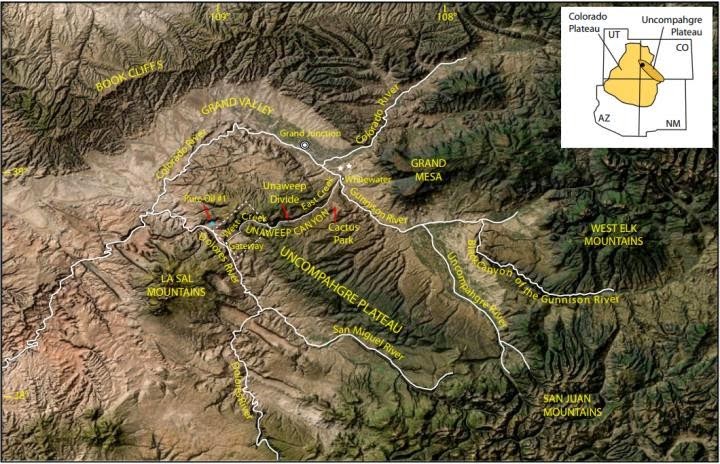
Unaweep Canyon is a puzzling landscape — the only canyon on Earth with two mouths. First formally documented by western explorers mapping the Colorado Territory in the 1800s, Unaweep Canyon has inspired numerous hypotheses for its origin. This new paper for Geosphere by Gerilyn S. Soreghan and colleagues brings together old and new geologic data of this region to further the hypothesis that Unaweep Canyon was formed in multiple stages.
The inner gorge originated ~300 million years ago, was buried, was then revealed about five million years ago when the ancestral Gunnison River began incising the Uncompaghre Plateau as part of the incision of the larger Colorado Plateau, and then the Gunnison River then abandoned the canyon upon landslide damming, ultimately joining the Colorado River.
This work highlights that incision of the Colorado Plateau by the Colorado River and its tributaries (including the Gunnison River) began synchronously across the entire Plateau, linking the incision of the Grand Canyon on the southern Plateau to events on the northern Plateau. It also highlights the intriguing possibility of preservation of very ancient landscapes from Earth’s deep-time past, and the role of exhumation of those landscapes in shaping the modern face of the planet.
Reference:
G. S. Soreghan, D. E. Sweet, S. N. Thomson, S. A. Kaplan, K. R. Marra, G. Balco, T. M. Eccles. Geology of Unaweep Canyon and its role in the drainage evolution of the northern Colorado Plateau. Geosphere, 2015; DOI: 10.1130/GES01112.1
Note: The above story is based on materials provided by Geological Society of America.










